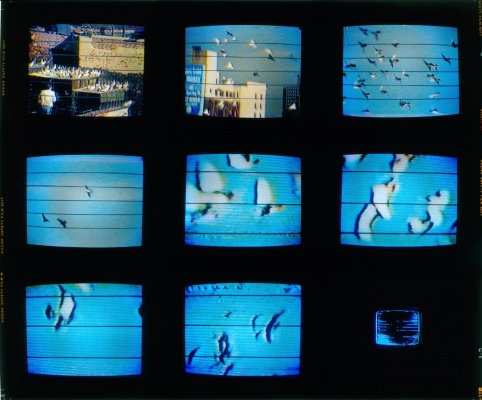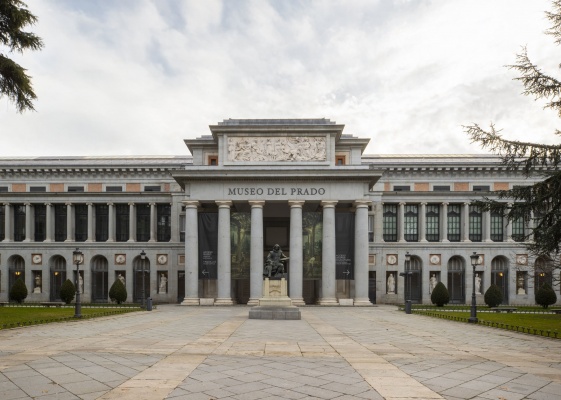Descripción de la Exposición
A few steps down the hallway, in the gallery’s project space, we encounter a totally different scenery. Here, Max Frisinger shows a new series of works, White lies. What at first glance looks like flat white surfaces are machine produced carpets, covered in multiple layers of white paint and eventually worked into smooth and plane objects. Hidden underneath, the carpets feature abstract and decorative patterns that evoke the style of abstract expressionism. What originally inspired the artist in buying them was their presentation in department stores in the style of Petersburg hanging: Arrays of carpets on top of each other. Referring back to a specific display of artworks in galleries and museums in the 18th century, this method involves hanging artworks in a way that emphasizes their individual characteristics while creating a cohesive overall arrangement. Oscillating between historical exhibition and contemporary commerce space, the carpets hence appear as the final product of a cycle that moves from art to economy: The radical art work, uniquely made, manifested as part of the art historical canon, turned into mass-produce, becoming everyday decoration. Aesthetically appropriated and formally copied into products. Ironically, it is only in the harsh light of the white cube, the contemporary art space par excellence, that these traces emerge again and we are able to read the fine lines in between.
Independently of it being installations, sculptures, drawings or collages, Frisinger’s work and artistic approach derive from where he is based, “gathering objects [a place or system] produces and throws out.” His methodology remains the same throughout: He collects materials and objects, often at salvage yards or flea markets, and reinvents or resculpts them into new forms and meanings. He challenges the enduring myth of the notion of the artist’s hand as primary source of creation by using or repurposing what is already there. The materials he chooses vary from found, unwanted and discarded objects to mass-produced, new off the rag goods. He is interested in carving out the inherent ambiguity he sees in these objects; he reshapes how an object is seen, categorized, or located. By observing and following the paths of objects, specific to a place and culture, he also turns into an anthropologist, tuning into social and economic networks, attempting to understand their structural interconnectedness.
Agregação (Engl. aggregation) – a term applied across various fields and title of the exibition – generally refers to the collection, consolidation, or merging of multiple individual entities or pieces of information into a single whole that represents all its component parts. While using paint for the first time as a layering method in White lies, the artist’s practice ranges between subtracting and recompiling material and objects. In the past, he transformed industrial radiators into boney and elegant sculptures or wielded industrial waste into space-filling installations. In doing so, he is less focused on these objects as symbols of energy consumption or waste and more on their essence as pure objects and forms, which are utterly familiar to us in the Western world. While clearly following the art historical tradition of the readymade, the presence of the ordinary or utilitarian, commercially available, and mass-produced object in the exhibition space, Frisinger’s work remains that of a sculptor, essentially considered with form. Form as something that precedes the process of art making as it exists already in another context – “Why draw a perfect circle if you can use an industrially shaped circular table instead?” as he says. It’s the familiarity with the everyday object or the concept of it as it prevails in society that the artist keeps reversing and repeating throughout.

Exposición. 08 may de 2025 - 14 sep de 2025 / MNAC - Museu Nacional d'Art de Catalunya / Barcelona, España

Formación. 30 oct de 2025 - 11 jun de 2026 / Museo Nacional del Prado / Madrid, España